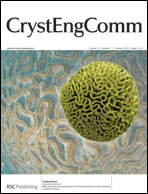Vapor-phase crystallization route to oxidized Cu foils in air as anode materials for lithium-ion batteries†
Abstract
This paper describes a facile vapor-phase strategy for the crystallization of copper oxide on Cu foil substrate in air and the further fabrication of integrated CuxO–Cu electrodes with CuxO readily on the Cu foil current collector, without using conductive carbon and binder. The


 Please wait while we load your content...
Please wait while we load your content...